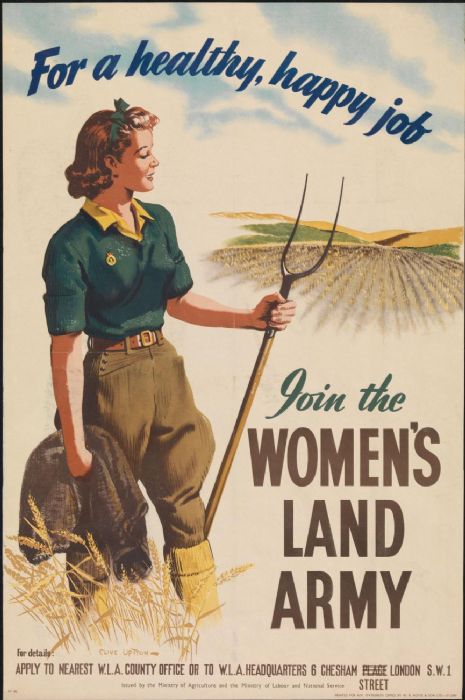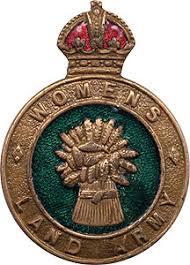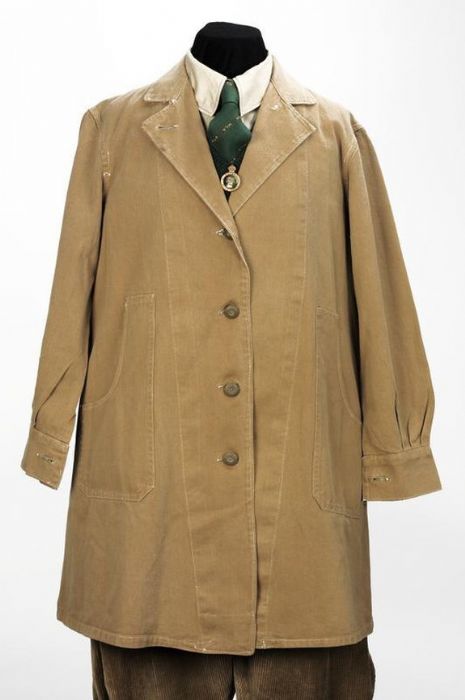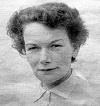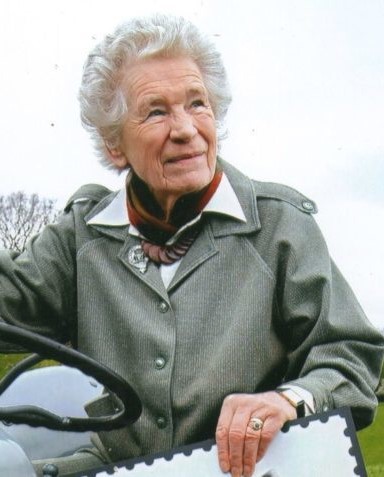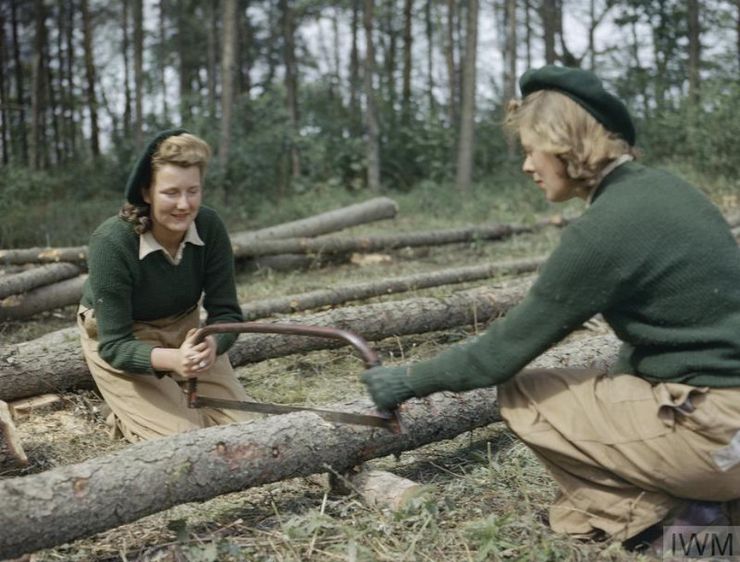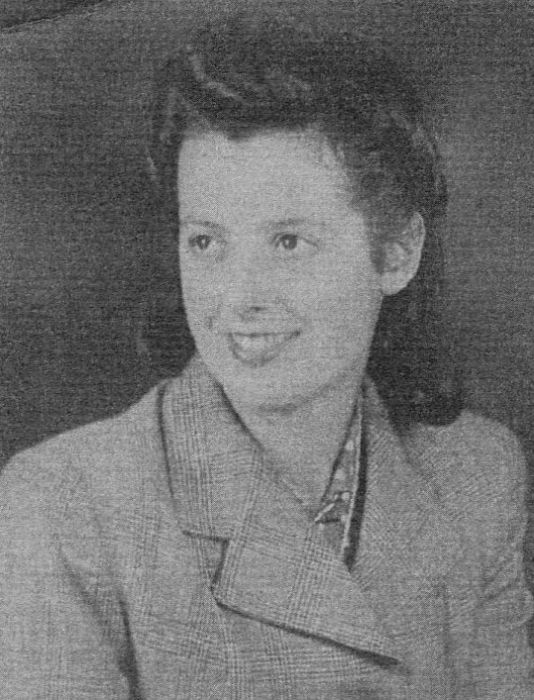|
The Role of Women
|
Records of serving personnel in World War 2 are not publicly available. Unlike the First World War, newspapers did not report deaths or injuries, partly because of morale back home and partly because of the intelligence it could feed back to the enemy.
In 1945, after the war was over The Galloway News published 14 group photos of babies born during the war to serving military personnel. Two of these photos were of Gatehouse babies. This created one of the few sources of information about who went to war.
During WWI, women had proven their ability to carry out traditionally male-dominated work. After WWII started there was no question that women would take over roles that had been carried out by men.
Many women continued in tradition roles such as cooking, teaching and nursing, but large numbers were employed in all sorts of work from farming to factories and many housewives also took on voluntary roles.
Jessie Sproat from Lennox Plunton was a nursing sister with Princess Mary's Royal Air Force Service. In November 1944, whilst serving in Italy she married Capt. Bowater in the British Church in Naples.
Nurse Mcleod was the District Nurse in Gatehouse in 1944. Her work load was increased enormously by the number of evacuees staying in the area. Miss Naeve and Mrs C. Crosbie (formerly Evelyn Tait who had been a nurse during WWI) helped out by running the clinics. Retired nurse Kate Hunter of Fleet Street also helped with nursing duties.
In the early stages of war many women voluntarily joined the armed forces but many more were needed which resulted in conscription being introduced in 1941.
Female branches of the armed forces were :
- Army - ATS (Auxiliary Territorial Service). In 1949, after the war this service became the Woman's Royal Army Corps - WRAC.
- Royal Navy - WRNS - Womens Royal Naval Service (“the Wrens”)
- Royal Air Force - WAAF - Womans Auxilliary Air Force ( “the Waffs”)
- SOE - Special Operations Executive - secret agents abroad and underground radio operators.
|
Many women in the forces carried out traditional roles such as cooks, clerks and telephonists but others took on jobs as mechanics, searchlight operators, anti-aircraft instrument operators and radar communicators. Most worked in Britain but some served abroad.
Winnie Farmer (right) was born at Barrhill Lodge in 1922 to John and Agnes Farmer. She joined the Fleet Air Arm, the air force section of the Royal Navy. She was a flight mechanic and worked on Wellington and Lancaster bombers at Silloth in Cumbria and Kinloss in Moray.
Ethel Salmond served as an aircraftwoman 2nd class in the WAAF. She was working in Newcastle upon Tyne when she died in July 1944. Her father George Salmond was the headmaster at Fleetside School, Gatehouse between 1906 and 1920 before moving to Kirkmabreck School at Creetown. |
|
Gatehouse had no factories but there were some nearby. At Tongland, silk was made for parachutes. ICI made ammunition at Powfoot and there were munitions depots at Eastriggs. Rena McClymont was sent to work in a munitions factory in Dalbeattie. Some locals were called up to work further afield.
One of the Cochrane sisters from Rusko was drafted to work at a munitions factory near Glasgow.
Rena's sister Mary Girgan worked in a steelworks in Glasgow when her husband Jimmy was posted to help the US army unload trucks and other vehicles from ships onto the dockside.
Nancy Hunter worked in a factory at Milnathort, Kinrosshire when her husband Arthur was posted to work at RAF Balado.
Nan Hunter, (Arthur's sister) a trained children's nurse, had changed jobs to work on some highly sensitive work in Watford, probably connected with the aircraft industry, when she was killed by a lorry in a road accident in 1942.
After the war some jobs reverted back to men. Kathy Cairns started work as a 15-year in the Bank of Scotland (in 1945) in Gatehouse but lost her job when men were again available.
|
|
In 1939 Britain imported much of its food requirements: 80% of its fruit, 70% of cheese and sugar, 70% of its cereals and 50% of its meat. With much of this being transported across the Atlantic Ocean where many ships were torpedoed, food shortage became a real issue. Although farming was a protected occupation, many younger men joined the forces so manpower was in short supply. Also more land was turned over to growing crops which needed a bigger workforce. The Woman's Land Army (WLA) had originally been set up during World War I but was disbanded in 1918. It reformed in 1939, initially as a voluntary service, but from December 1941 women could be conscripted to work on the land. |
|
|
By 1944 there were over 80,000 land girls. They were provided with a uniform - which proved to be neither very practical or warm and waterproof. Many worked in groups but around Gatehouse it was more usual to have a single one on a farm. Extra farm help was sometimes given by prisoners of war who had been detained locally. Conscientious objectors were also required to provide help. Land Girls were paid directly by the farmer - minimum wage 28/- per week with 14/- deducted for board and lodgings (Men were paid on average 38/-per week). They worked 48 hours a week in winter, 50 hours in summer. Initially there were no holidays but after the 'Land Girls Charter' was introduced in 1943 they were allowed 1week of holiday each year and given a pay increase. |
|
|
|
Mary Isobel ‘Bel’ Adams was born in 1918 and brought up at Aikiehill in the Fleet valley. She helped care for her older brother John who had been blinded in a childhood accident. Sadly John's twin James Adams had died in India just before the start of the war while serving with the KOSB.
Flora Barton was born in 1924 in Kirkgunzeon, 5 miles from Dumfries. She came to Gatehouse to work for the Veitch family at Low Creoch Farm. She remained in Gatehouse after the war marrying David Y. Veitch, the farmer's son. |
|
|||||
|
In December 1941 the Galloway news reported that there were 70 land girls working in the Stewartry. By 1943 this number had risen to 256. There was a concern that many of the girls were lonely and suffered from homesickness so efforts were made to arrange get-togethers and other social events. To house land girls, a hostel was built at the corner of Garden Street (next to the present-day health centre). In 1945 the Galloway News reported on an event where Land Girls were presented with Service Awards. They included these farms around Gatehouse
|
||||||
|
Mona McLeod came from Cambridgeshire and was about to go to university when war broke out. Her father told her to postpone her education and arranged for her to work at Littleton Farm, outside Gatehouse. After the war she continued her education.
|
|
Left : Mona aged 95.
This link leads to an interview with Mona describing her experiences. http://www.bbc.co.uk/news/av/magazine-41310678/the-women-who-fed-the-uk-in-world-war-two
|
||||
|
Originally part of the Woman's Land Army, the Woman's Timber Corps was set up in 1942 to help with the supply of pit props and telegraph poles which were urgently needed. Many of the male forestry workers had joined the army. Girls over 17 could join although some as young as 14 were employed. There were about 6,000 'Lumber Jills' as they were nicknamed. They were paid between 35/- and 46/- per week. It was hard and arduous work and involved felling, shredding, operating sawmills and working with both horses and tractors. Bark from alder trees was stripped from trunks on the Rusko Estate and then sent to ICI where is was used to make explosives. The WTC was disbanded in August 1946. |
|
|
Prisoners of War also helped with the forestry. Leo McClymont remembers Italian prisoners cutting down wood on Gatehouse Hill - guarded by the man who delivered them in a lorry from their camp at Twynholm. He also remembers a man called Wright who worked in the forestry. He was a conscientious objector whose nickname was "La Te Doh" and he lodged with Miss Lunn at Ardmor. Another forestry worker was Violetta Catignani, who came from Dunoon where her family owned an ice cream shop. She lodged with the Hannay family at the Forestry Holdings near Cally. |
|
|
Sheila Scott from Wood of Cree was employed as a Lumber Jill in the Galloway Forest. Later in the war she worked at the sawmill at Minnigaff.
|
|
.jpg)
